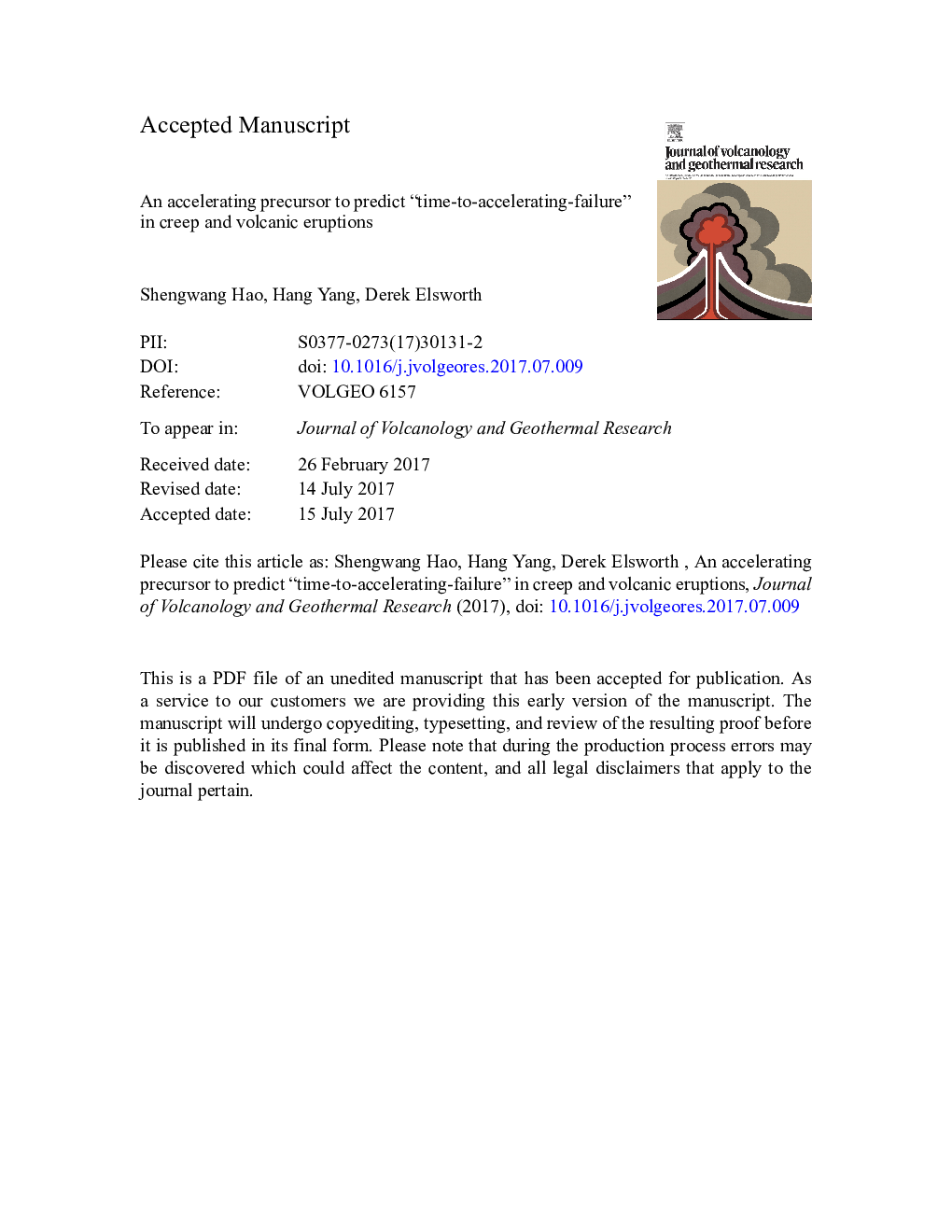| Article ID | Journal | Published Year | Pages | File Type |
|---|---|---|---|---|
| 5783701 | Journal of Volcanology and Geothermal Research | 2017 | 27 Pages |
Abstract
Real-time prediction by monitoring of the evolution of response variables is a central goal in predicting rock failure. A linear relation ΩÌΩ¨â1=Ctfât has been developed to describe the time to failure, where Ω represents a response quantity, C is a constant and tf represents the failure time. Observations from laboratory creep failure experiments and precursors to volcanic eruptions are used to test the validity of the approach. Both cumulative and simple moving window techniques are developed to perform predictions and to illustrate the effects of data selection on the results. Laboratory creep failure experiments on granites show that the linear relation works well during the final approach to failure. For blind prediction, the simple moving window technique is preferred because it always uses the most recent data and excludes effects of early data deviating significantly from the predicted trend. When the predicted results show only small fluctuations, failure is imminent.
Keywords
Related Topics
Physical Sciences and Engineering
Earth and Planetary Sciences
Geochemistry and Petrology
Authors
Shengwang Hao, Hang Yang, Derek Elsworth,
